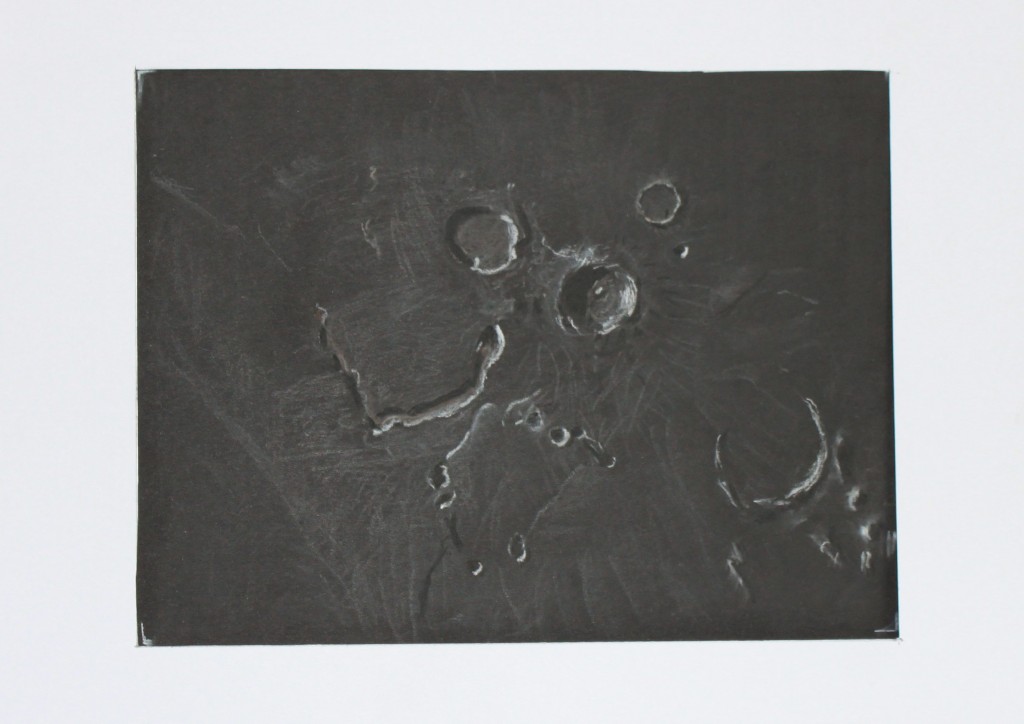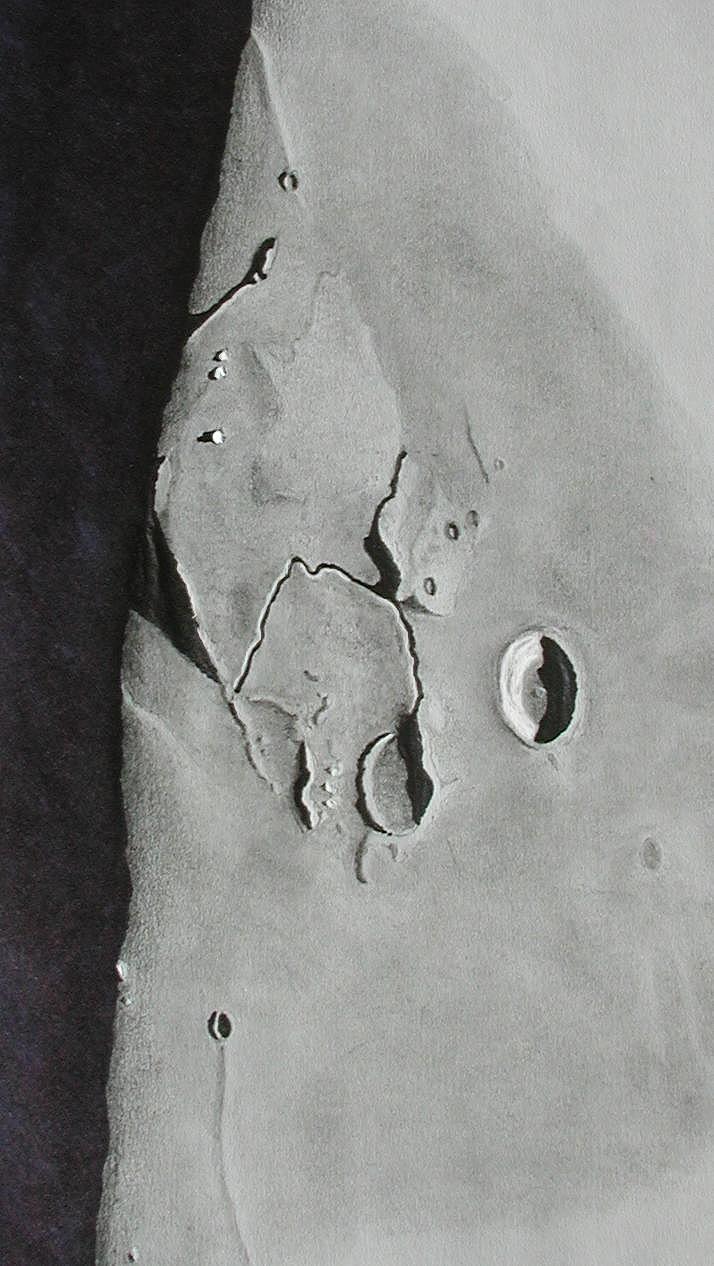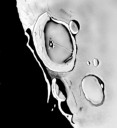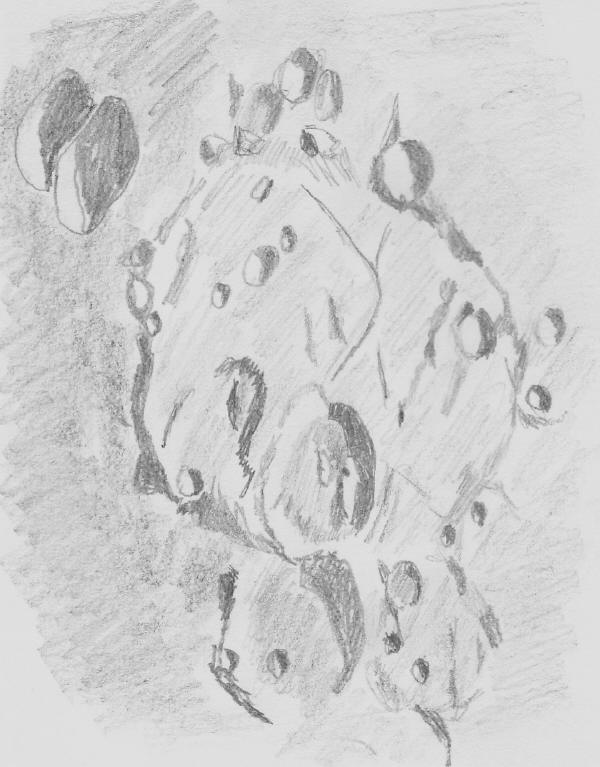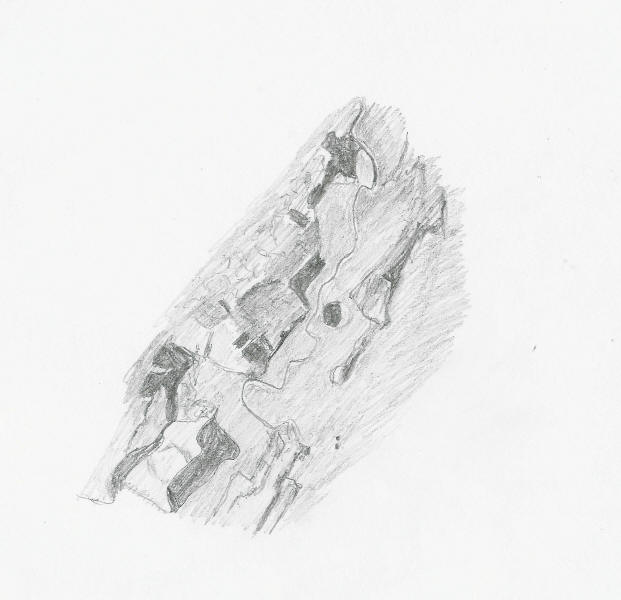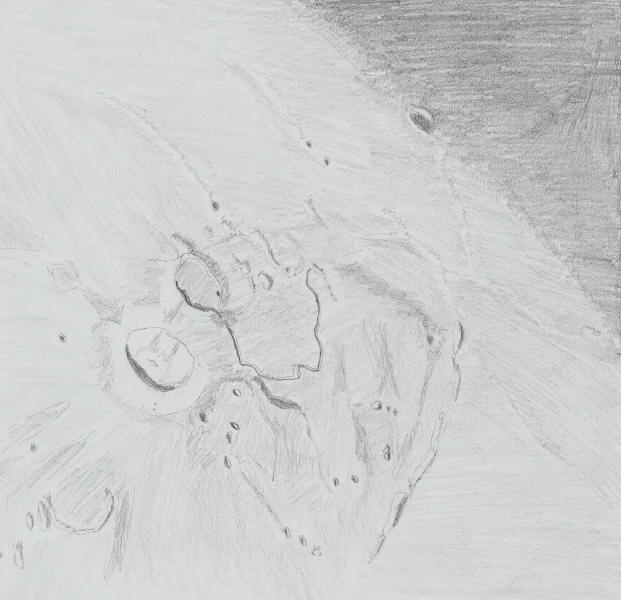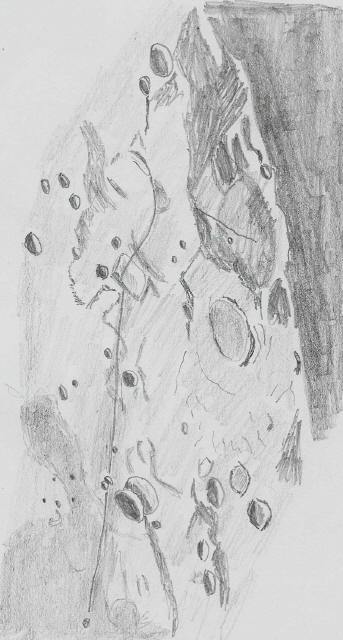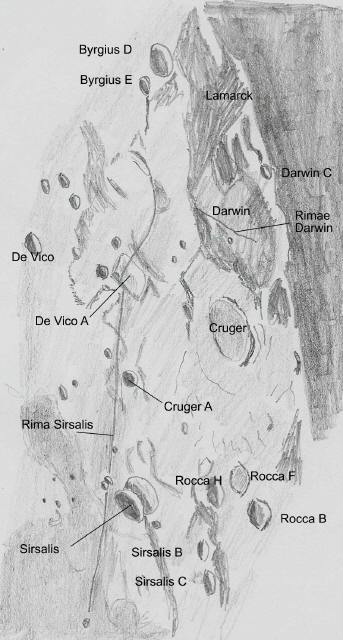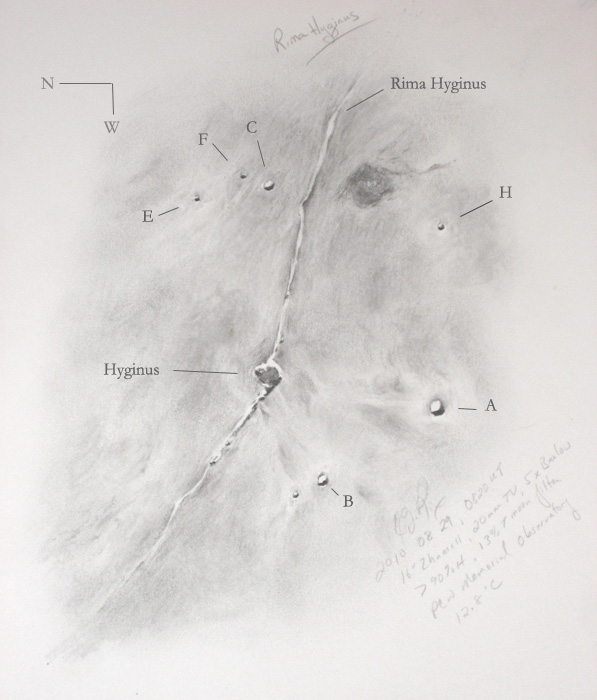
2010 08 29, 0820 UT Rima Hyginus
PCW Memorial Observatory, OH, USA, Erika Rix
Zhumell 16”, 20mm TV, 5x Barlow, 450x mag, 13% T moon filter
Temp: 12.8C, >90% humidity, S: Antoniadi I
Sketch created scopeside with Rite in the Rain paper and charcoal.
Phase: 307.3°
Lunation: 19.38d
Illumination: 80.3%
Lib. Lat: -6°04’
Lib. Long: -6°03’
Az: 260°08’, Alt: 34°57’
Rima Hyginus: Linear Rille, 7° E, 7.5° N
Imbrian period (-3.8 billion yrs to –3.2 billion yrs)
Dimension: ~226 km, Height: unknown
Named after Caius Julius Hyginus, 2nd century BC Greek Astronomer
http://www.lpod.org/archive/archive/2004/02/LPOD-2004-02-25.htm
“The key to understanding the origin of Hyginus is probably the small
pit craters visible in the rille on the northwest (left) side of
Hyginus. These pits almost certainly formed by collapse of the roof over
a lava tube.”
A lot of the features were washed out surrounding the rille, but the
flat floor of Hyginus was evident as well as its irregular shape. I
could make out some of the pits to the northwest half of the rille and a
couple hints of the craterlets (or pits) to the southeast half. The
subtle variances in albedo were difficult to render, however,
interesting to observe. If I remember correctly, the dark patch to the
north of H consists of volcanic ash.
While searching for information on this rille, I came across yet another
amazing image from Wes Higgins. The pits Chuck Wood wrote about in the
article above are clearly shown.
http://www.higginsandsons.com/astro/Pictures-iin-templets/Rima-Hyginus-08-03-07.htm
Resources
Rukl plate 34
“The Modern Moon” by C. Wood pgs. 58-59
LPOD:
http://www.lpod.org/coppermine/thumbnails.php?album=search&type=full&search=rima+hyginus
Erika Rix
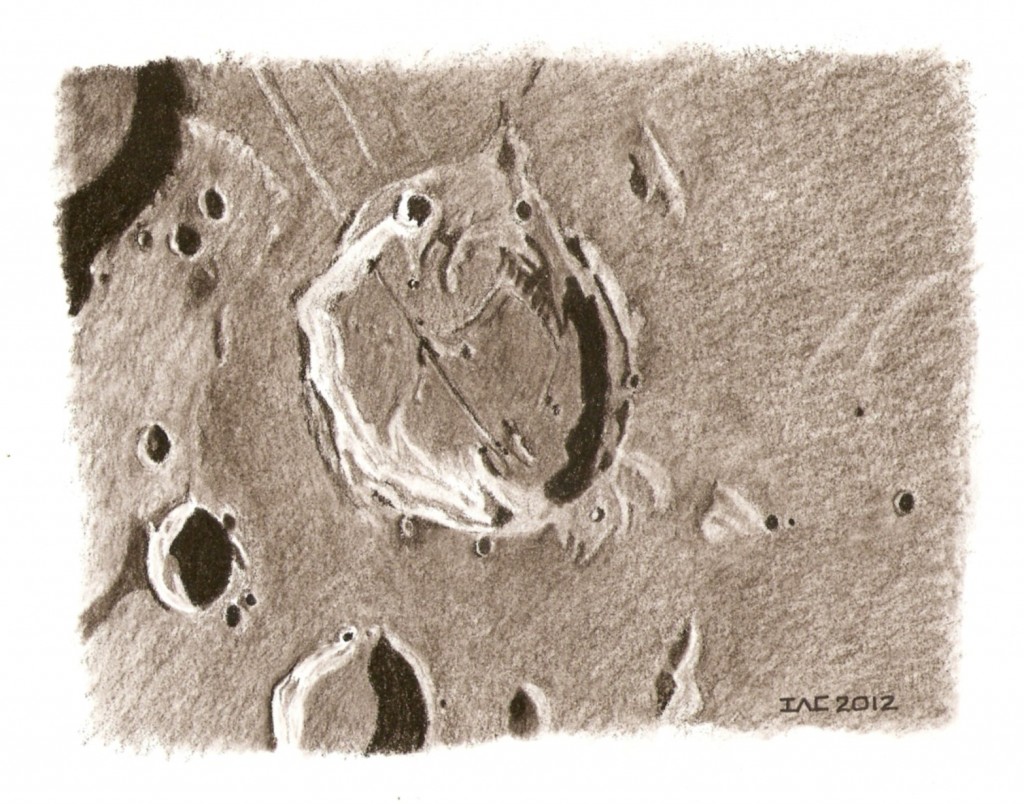
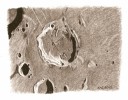

![Mondkrater Hall 27.03.2012[2] Rima G. Bond and Crater Hall](http://www.asod.info/wordpress/wp-content/2012/05/Mondkrater-Hall-27.03.20122.jpg)

